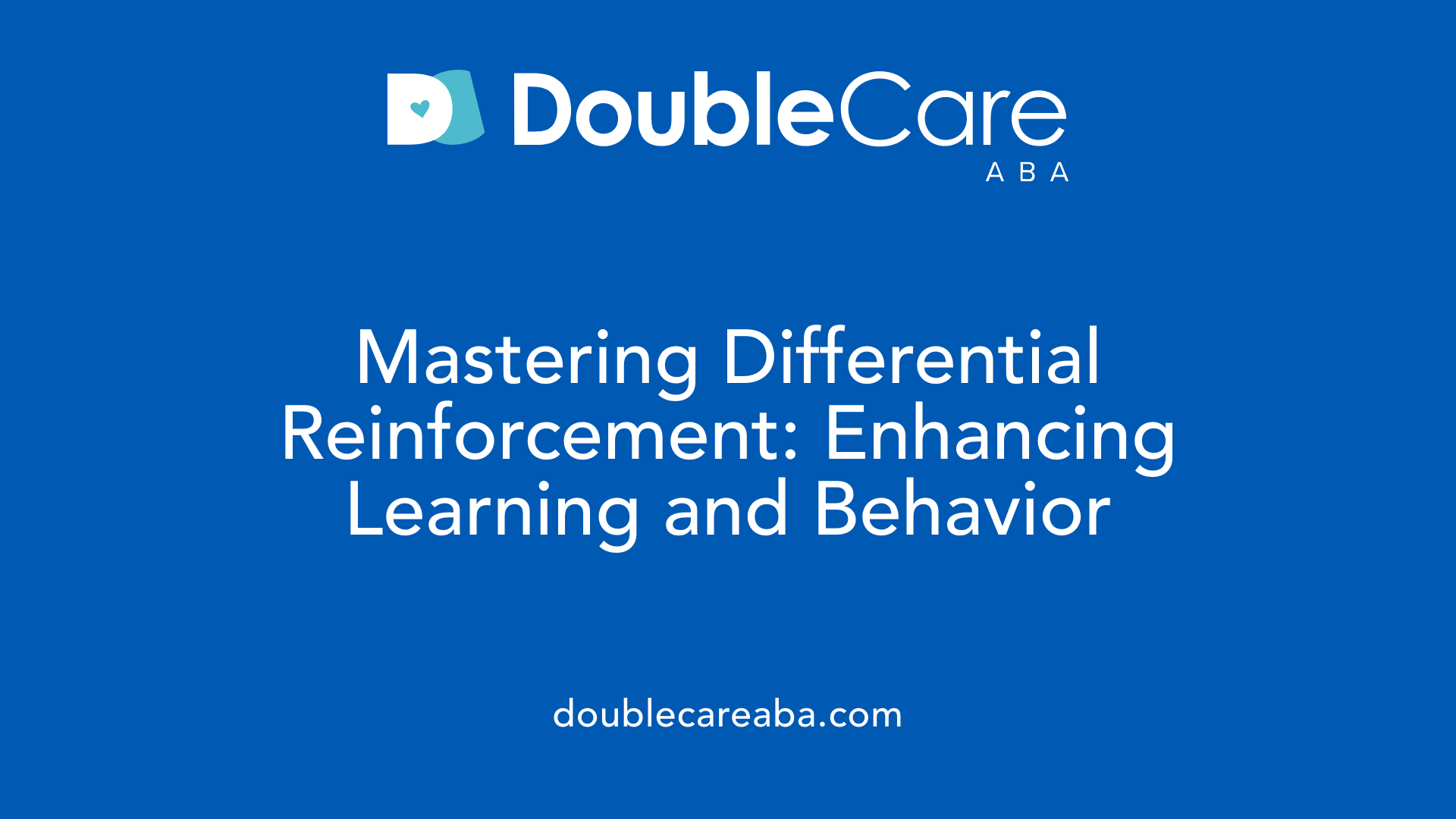The Importance of Reinforcement in Autism Therapy
Harnessing Reinforcement: A Cornerstone of Effective Autism Therapy

Understanding Reinforcement in Autism Therapy
Reinforcement plays a pivotal role in Applied Behavior Analysis (ABA) therapy, a scientifically validated approach widely used to support individuals with autism. By strategically encouraging desired behaviors and reducing challenging ones, reinforcement techniques underpin the progress achieved in developing communication, social, and self-help skills. This article explores the fundamentals of reinforcement within ABA, its practical applications, the variety of techniques employed, and its significance in fostering meaningful developmental gains for children on the autism spectrum.
What Is Applied Behavior Analysis (ABA) Therapy?

Definition and Purpose of ABA Therapy
Applied Behavior Analysis (ABA) is a research-backed behavior therapy designed to help individuals with autism and other developmental disorders. It focuses on increasing positive behaviors and reducing negative or harmful behaviors by analyzing and modifying the environmental factors that influence actions.
ABA's Scientific Basis
ABA is grounded in behavioral science, utilizing the A-B-C model—Antecedent, Behavior, Consequence—to understand behavior patterns. It applies reinforcement principles, especially positive reinforcement, to encourage desirable skills and behaviors.
Individualized Nature of ABA
Each ABA program is tailored to the individual's unique needs and strengths. A Board Certified Behavior Analyst (BCBA) conducts assessments to develop personalized treatment plans. The therapy may involve structured methods like Discrete Trial Training (DTT) or more naturalistic, play-based approaches such as the Early Start Denver Model (ESDM).
Applications in Autism Therapy
ABA therapy aims to improve communication, social skills, self-help, and reduce challenging behaviors in children with autism. Early intensive intervention, often beginning before age four and involving over 20 hours per week, has been shown to produce significant developmental gains and reduce future support needs.
Goals of ABA
The primary goals include fostering functional communication, social interaction, independence in daily living, and generalizing skills across settings. ABA emphasizes family involvement to ensure skills transfer beyond therapy sessions.
Evidence Supporting ABA's Effectiveness
Research demonstrates that ABA leads to meaningful improvements in socialization, expressive language, and overall developmental outcomes. It is one of the most evidence-based interventions for autism, providing families with strategies that enhance quality of life and empowerment for their children.
Core Components and Techniques in ABA Therapy

What are the main components or techniques used in ABA therapy?
Applied Behavior Analysis (ABA) therapy incorporates several established components and techniques designed to support behavioral improvement and skill acquisition. One widely used method is Discrete Trial Training (DTT), which consists of structured, one-on-one teaching sessions where tasks are broken down into small, manageable steps. DTT emphasizes repetition and clear reinforcement to promote learning.
Another approach is Natural Environment Teaching, which encourages skill development within everyday settings, allowing children to learn through play and interaction in more authentic contexts. This method supports generalization of skills across environments.
Pivotal Response Treatment (PRT) is a play-based, child-led approach that targets pivotal areas such as motivation and response to multiple cues. It seeks to expand learning opportunities by following the child's interests and using natural reinforcement.
Effective reinforcement strategies are central to ABA, involving both positive reinforcement (adding rewards) and negative reinforcement (removing unpleasant stimuli) to increase desirable behaviors. Techniques like prompting, fading, behavior chaining, modeling, extinction, and script fading help shape complex skills and decrease challenging behaviors.
ABA also uses behavior analysis tools such as the ABC (Antecedent-Behavior-Consequence) model to understand and modify behaviors, alongside visual supports and communication aids like the Picture Exchange Communication System (PECS) to facilitate interaction.
Ultimately, ABA combines these evidence-based skill acquisition methods tailored to each individual's strengths and needs, promoting communication, social engagement, independence, and reduction of maladaptive behaviors.
The Role of Reinforcement in ABA Therapy

What is reinforcement?
Reinforcement is a fundamental principle in Applied Behavior Analysis (ABA) that involves increasing the likelihood of a desired behavior by offering a consequence that a person finds rewarding. This process encourages the repetition of positive behaviors and helps reduce unwanted behaviors.
What are positive and negative reinforcement?
Positive reinforcement involves adding a pleasant stimulus after a behavior, such as praise or a favorite toy, to increase that behavior's occurrence. Negative reinforcement, on the other hand, involves removing an unpleasant stimulus when the desired behavior occurs, like turning off a loud noise when a child complies.
What is differential reinforcement and what are its types?
Differential reinforcement is a technique where only specific desirable behaviors are reinforced while withholding reinforcement for undesired behaviors. There are several types:
- Differential Reinforcement of Alternative Behavior (DRA): Reinforces a positive behavior that serves the same function as the problematic one.
- Differential Reinforcement of Incompatible Behavior (DRI): Reinforces behaviors that cannot occur simultaneously with the undesired behavior.
- Differential Reinforcement of Other Behavior (DRO): Provides reinforcement when the problematic behavior does not occur during a set time.
How does reinforcement shape behavior?
Reinforcement works by forming an association between a behavior and its positive consequence, thus increasing the probability of the behavior being repeated. Immediate reinforcement following the behavior strengthens this connection.
What are examples of reinforcement in autism therapy?
In autism therapy, differential reinforcement is widely used to promote social skills, communication, and self-help abilities. For example, a therapist may provide verbal praise or tokens when a child uses words to express needs instead of engaging in challenging behaviors. This strategy enhances learning motivation and encourages skill development in natural settings.
Differential Reinforcement: Targeting Desired Behaviors

What is Differential Reinforcement?
Differential reinforcement is a powerful behavior modification technique in Applied Behavior Analysis (ABA) that focuses on encouraging desired behaviors by selectively reinforcing them while withholding reinforcement for undesired actions. It relies on the foundational principle of reinforcement, which can be either positive (adding a pleasant stimulus) or negative (removing an unpleasant stimulus). This approach helps shift behavior patterns by making preferred behaviors more rewarding and problematic behaviors less appealing.
What are the Types of Differential Reinforcement?
There are three main types of differential reinforcement:
Differential Reinforcement of Alternative Behavior (DRA): This involves reinforcing a desirable alternative behavior that serves the same function as the problematic one. For example, reinforcing a child for asking for a break instead of engaging in tantrums.
Differential Reinforcement of Incompatible Behavior (DRI): Here, the focus is on reinforcing behaviors that are physically or functionally incompatible with the unwanted behavior, reducing the chance it will occur. For instance, reinforcing a child for keeping hands busy to prevent hitting.
Differential Reinforcement of Other Behavior (DRO): This strategy reinforces the absence of the problematic behavior during set intervals. If the undesired behavior does not occur during a designated time, a reward is provided.
How Does Selective Reinforcement Work?
Selective reinforcement involves carefully choosing when and what to reinforce, creating a clear distinction between behaviors that are encouraged and those that are discouraged. By reinforcing alternative or incompatible behaviors, individuals learn more appropriate ways to meet their needs or express themselves. In DRO, reinforcing the absence of an unwanted behavior encourages self-control and gradual behavior reduction.
How is Differential Reinforcement Applied in Autism Therapy?
In ABA therapy for children with Autism Spectrum Disorder (ASD), differential reinforcement is widely used to promote social, communication, and self-help skills while reducing challenging behaviors. Therapists and caregivers reinforce desired behaviors selectively to help children develop functional abilities and improve interactions. This technique supports individualized treatment and, when combined with other ABA strategies, contributes significantly to positive developmental outcomes.
Positive Reinforcement: Building Skills and Confidence

What is Positive Reinforcement and Why is Timing Important?
Positive reinforcement in ABA therapy involves providing a reward immediately following a desired behavior. This immediate delivery is crucial to help the child associate the behavior with the positive outcome clearly and quickly. Without timely reinforcement, the connection between action and reward becomes weaker, reducing the effectiveness of the strategy.
Common Methods of Positive Reinforcement
Several reinforcement techniques are commonly employed to encourage behaviors:
- Verbal Praise: Expressing approval through encouraging words boosts motivation and confidence.
- Token Systems: Tokens like stickers or points can be earned and later exchanged for preferred items or activities, providing a tangible goal.
- Tangible Rewards: These include toys, treats, or activities the child values, tailored to individual preferences.
Crafting Individualized Reinforcement Plans
Effective ABA therapy recognizes that each child has unique motivators. Crafting a personalized reinforcement plan involves identifying what rewards are most meaningful to the child and structuring how and when these reinforcers are delivered. Regular monitoring and adjustments ensure the plan remains effective as the child's needs and preferences evolve.
Motivational and Developmental Benefits
Positive reinforcement not only increases desired behaviors but also builds intrinsic motivation and self-confidence. It supports children in learning new skills by making the learning process rewarding and enjoyable. This approach strengthens the child's engagement and fosters a positive attitude toward challenges.
Strengthening Behavior-Reward Associations
By consistently pairing behaviors with reinforcing outcomes, positive reinforcement helps establish strong behavioral patterns. This foundation facilitates generalization, allowing children to apply learned behaviors across different environments and situations.
How Positive Reinforcement Helps Reduce Challenging Behaviors
While encouraging desirable actions, positive reinforcement also indirectly reduces challenging behaviors by providing alternative behaviors that are more rewarding than the problematic ones. This shift leads to improved social interactions and daily functioning, benefiting both the child and their family.
Qualified Professionals Delivering ABA Therapy

Who provides ABA therapy and what qualifications do these professionals typically have?
ABA therapy is delivered by a collaborative team of specialized professionals trained in applied behavior analysis. The primary roles include Board Certified Behavior Analysts (BCBAs), Board Certified Assistant Behavior Analysts (BCaBAs), and Registered Behavior Technicians (RBTs).
BCBAs are highly trained clinical leaders responsible for conducting individualized behavioral assessments, designing and overseeing treatment plans, and making data-driven adjustments to interventions. Their certification requires graduate-level coursework, supervised practical experience, and passing a rigorous exam.
BCaBAs assist BCBAs by supporting intervention implementation, supervising RBTs, and helping with treatment adjustments. They hold certification through supervised experience and examination but are not authorized to practice independently.
RBTs function as front-line practitioners who conduct therapy sessions, implement behavior change techniques, and systematically collect data. They undergo specific training, competency assessment, and must work under BCBA or BCaBA supervision.
A critical aspect of ABA service delivery involves ongoing supervision and continuous data monitoring. This ensures interventions remain effective and are ethically practiced according to evidence-based standards.
Family collaboration is fundamental: professionals actively engage parents and caregivers to tailor programs to the child's needs, reinforce learning at home, and ensure skill generalization across environments. This team-based, individualized approach promotes better outcomes and ethical care in ABA therapy.
Impact of ABA Therapy on Development and Daily Life

How does ABA therapy impact the development and daily life of individuals with autism?
ABA therapy significantly influences the development and everyday living of individuals with autism by fostering crucial skills in communication, social interaction, and adaptive behaviors. Using evidence-based techniques like positive reinforcement, discrete trial training (DTT), and naturalistic methods such as Pivotal Response Training (PRT), ABA helps enhance language abilities, attention, and memory. These improvements enable individuals to better navigate social situations and increase their functional independence.
Early intensive intervention with ABA—typically delivered for over 20 hours per week before age four—has shown remarkable benefits. These include accelerated speech development, improved social skills, and the acquisition of self-care abilities, which collectively enhance the child's capacity to participate meaningfully in daily life.
ABA's individualized approach tailors treatment plans to each person's unique strengths, interests, and needs, ensuring that therapy remains engaging and relevant. Furthermore, interventions are designed to generalize skills across multiple settings such as home, school, and community, providing consistency and promoting the application of learned behaviors in real-world contexts.
Reduction of problematic behaviors through differential reinforcement techniques also plays a crucial role. By selectively reinforcing desired actions and withholding reinforcement for undesired behaviors, ABA decreases challenging behaviors, which improves overall safety and social acceptance.
Together, these factors contribute to increased independence and a higher quality of life for individuals with autism. Families benefit as well, experiencing relief and satisfaction from their loved one's progress in daily functioning and social integration.
Evolving Approaches: From Historical to Modern ABA Practices

Historical use of reinforcement and punishment
Early ABA practices, pioneered by Dr. O. Ivar Lovaas in the 1960s, employed a combination of reinforcement and punishment techniques to influence behaviors. These included aversive methods such as electric shocks aimed at reducing undesirable actions. Such approaches were often intensive, repetitive, and compliance-focused, reflecting the therapeutic norms of that era.
Shift away from aversive methods
Over time, the field recognized the ethical and emotional drawbacks of punishment-based interventions. Modern ABA has moved away from using aversive strategies, focusing instead on positive reinforcement techniques that encourage desired behaviors without causing harm. This shift prioritizes the child's well-being and engagement.
Introduction of play-based and naturalistic interventions
Contemporary ABA incorporates play-based and naturalistic methods like Pivotal Response Treatment (PRT) and the Early Start Denver Model (ESDM). These approaches leverage the child's interests and natural environments to facilitate learning, making therapy more enjoyable and relevant. This transition helps promote spontaneous communication and social skills development.
Focus on generalization and child-led learning
Modern ABA methodologies emphasize the generalization of skills across settings through child-led interactions and family involvement. These practices help children apply learned behaviors in real-life situations, promoting autonomy and meaningful participation.
Reduced intensity and individualized pacing
Unlike earlier versions of ABA often involving 40 or more hours per week, current interventions typically offer 10 to 20 hours weekly, tailored to the child's unique needs and tolerance. This individualized pacing reduces stress and supports sustained progress without overwhelming the child.
Alignment with neurodiversity perspectives
Contemporary ABA acknowledges neurodiversity by focusing on building upon each child's strengths rather than trying to normalize them forcibly. While critics highlight concerns about potential emotional harm and masking of authentic identity, supporters emphasize responsible, ethical application of ABA to enhance communication, independence, and quality of life.
Addressing criticisms and challenges
Concerns about ABA include its historical emphasis on compliance and potential emotional distress from repetitive, demanding protocols. Poorly implemented programs have caused trauma in some cases. Nonetheless, modern ABA advocates argue that by adopting ethical, child-centered strategies, the therapy can empower autistic individuals and support their participation in society.
Implementing Reinforcement Effectively: Best Practices
Identifying and tailoring reinforcers
Effective reinforcement in ABA therapy starts with identifying reinforcers that are meaningful to the individual child. These can range from verbal praise and tokens like stickers to tangible rewards. Tailoring reinforcers to a child’s unique preferences enhances motivation and engagement, making the learning process more effective.
Timing and consistency in reinforcement
Timing is crucial; reinforcement should be immediate following the desired behavior to strengthen the association. Consistency in delivering reinforcement ensures the behavior is reliably encouraged, which helps sustain behavioral gains over time.
Balancing reinforcement with other intervention strategies
While positive reinforcement is a powerful tool, it works best when integrated with other ABA strategies like prompting and modeling. Balancing reinforcement with these methods supports comprehensive skill development and addresses a range of behaviors effectively.
Progress monitoring and adjustment
Regularly monitoring progress allows practitioners to observe how well reinforcement strategies are working. Data-driven adjustments ensure that the intervention remains effective and responsive to the child's evolving needs.
Family and caregiver involvement
Family participation is vital. Teaching caregivers how to deliver reinforcement consistently at home promotes skill generalization across settings, boosting overall success.
Avoiding common misconceptions about reinforcement
It is important to clarify that reinforcement is not bribery, nor is it intended to force children to conform unnaturally. Instead, it encourages positive behaviors, builds confidence, and respects neurodiversity by supporting each child’s strengths and interests.
The Importance of Family and Environment in Reinforcement-Based Therapy
How do families contribute to the success of reinforcement-based therapy?
Family involvement is crucial in reinforcement-based therapy, such as ABA, because it ensures that interventions are consistently applied across different environments. Parents and caregivers are trained to recognize target behaviors and implement reinforcement strategies effectively. Their active participation helps maintain consistency and builds a supportive atmosphere that promotes the child's progress.
Why is generalization of skills beyond therapy sessions essential?
Generalization refers to the transfer of learned skills from therapy settings to real-life situations. Without this, improvements seen in therapy might not translate to everyday functioning. Families and caregivers reinforce newly acquired behaviors during routine activities, which helps children practice and solidify these skills in natural environments, boosting long-term success.
How can caregivers create supportive environments that enhance learning?
Supportive environments are structured with clear expectations and consistent reinforcement. Caregivers can create settings that reduce distractions and provide frequent opportunities for the child to practice desired behaviors. Using individualized reinforcers that resonate with the child’s preferences also increases motivation.
What training do caregivers receive to use reinforcement effectively?
Caregivers are often coached by Board Certified Behavior Analysts (BCBAs) or therapists to understand how reinforcement works—including identifying effective reinforcers, timing administration, and monitoring progress. This guidance ensures that reinforcement strategies are implemented accurately and adjusted as necessary.
How does collaboration among therapists, families, and schools benefit the child?
Collaboration promotes a unified approach where all parties use consistent reinforcement procedures aligned with individualized treatment plans. Sharing information ensures that gains made in therapy are reinforced throughout the child’s various environments, facilitating seamless support.
In what ways do everyday interactions enhance motivation and learning?
Daily routines offer natural opportunities for positive reinforcement, like verbal praise or small rewards, following desired behaviors. These interactions strengthen motivation and help embed new skills into the child's lifestyle, fostering independence and confidence.
Together, family engagement and an enriched environment form the backbone of effective reinforcement-based therapy. Their roles ensure that learning is continuous, meaningful, and deeply integrated into the child’s life.
Reinforcement as a Foundation for Lasting Progress in Autism Therapy
Reinforcement is fundamentally integral to the success of ABA therapy, enabling individuals with autism to acquire vital skills and improve their quality of life. By applying targeted, evidence-based reinforcement strategies such as differential and positive reinforcement within individualized treatment plans, therapists empower children to build meaningful communication, social, and adaptive abilities. Ongoing innovation in ABA continues to refine these approaches, emphasizing ethical, naturalistic, and family-centered practices that honor neurodiversity while focusing on skill development and autonomy. Ultimately, reinforcement serves not just as a technique, but as a catalyst for lasting growth and greater independence for individuals with autism and their families.
References
- What is Differential Reinforcement? Exploring its Applications
- Applied Behavior Analysis (ABA)
- Benefits of ABA therapy: 4 benefits you should know
- The Power of Positive Reinforcement in ABA Therapy
- The Controversy Around ABA
- The Controversy Around ABA
- Is ABA therapy harmful? The controversy explained
- Debunking 7 Common Myths About ABA Therapy - GSEP Blog
- ABA Techniques: Strategies for Behavior Analysts - GSEP Blog
















